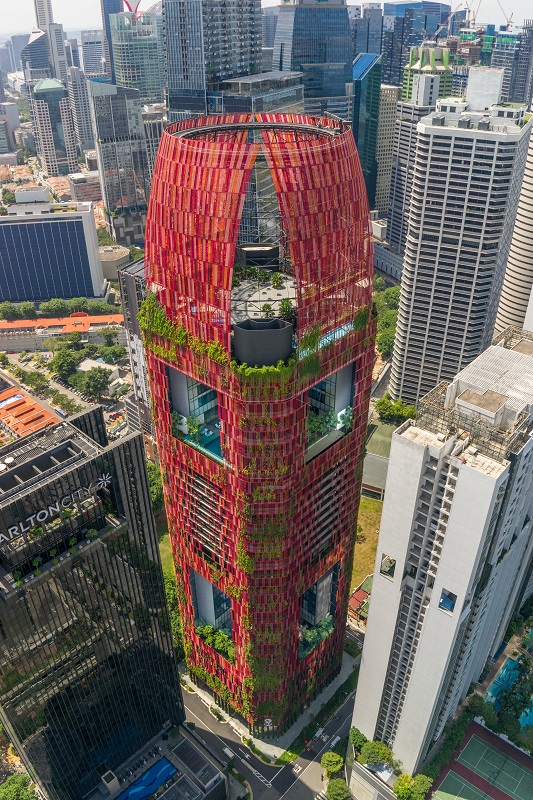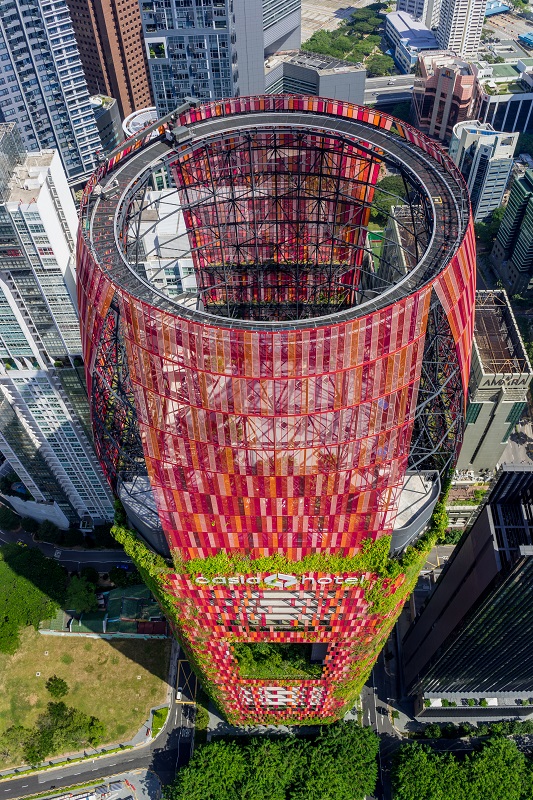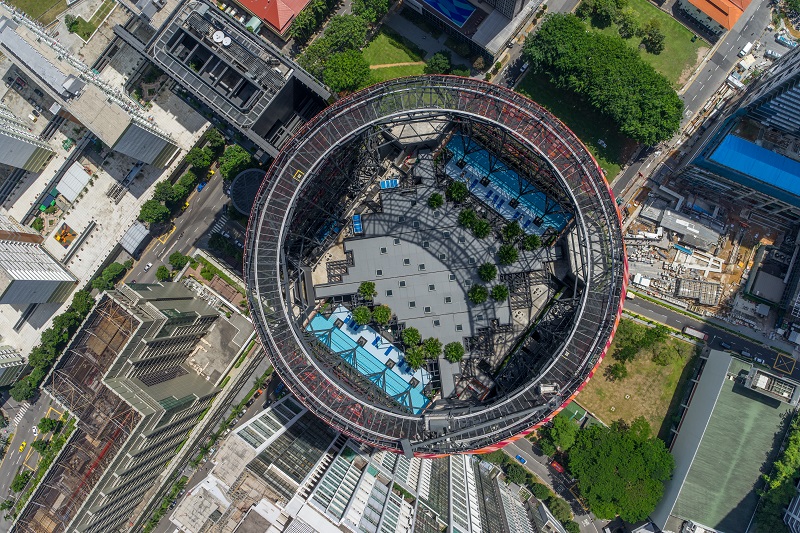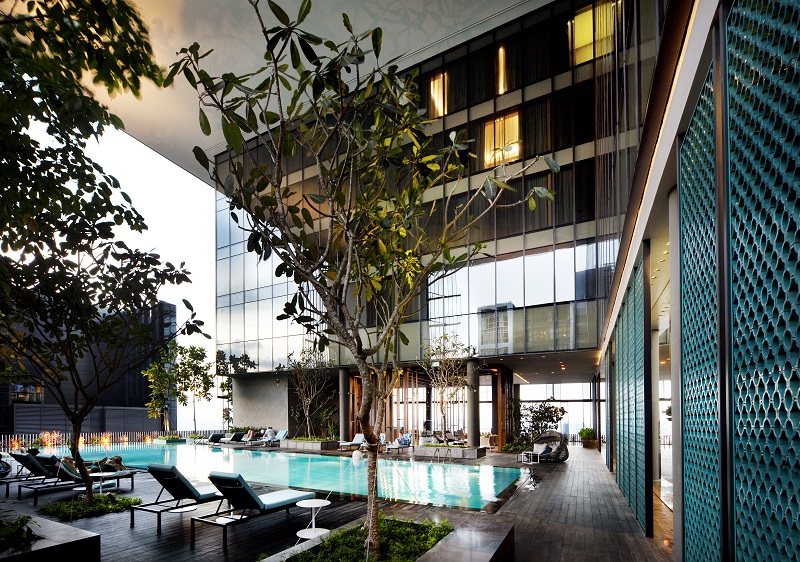Oasia Hotel Downtown, Singapore
[Image © Patrick Bingham-Hall]
In December 2016, a new verdant tower of green was completed in Singapore's financial centre.
Oasia Hotel Downtown was designed by WOHA Architects and has been used as a prototype of land use intensification for the urban tropics; presenting an alternative to the sleek skyscrapers of the west.
In June 2018, the Council on Tall Building and Urban Habitat (CTBUH) gave the 16th annual Best Tall Building Worldwide award to the Oasia Hotel Downtown. Beating 48 finalists from 28 countries, the tower was chosen by a panel of architects, judged against every aspect of performance.
Antony Wood, Executive Director and Awards Juror at CTBUH said; "This project won not only because it incorporates 60 stories of green walls along the exterior, but because of its significant commitment to communal space. The tower has given over 40% of its column to open air communal terraces in the sky."
[Image © K. Kopter]
WOHA created a series of different strata, each with its own sky garden, allowing for recreational and social areas throughout the high-rise. Each sky garden is sheltered at high level by the one preceding it, with open sides for formal and visual transparency, and to allow cross-ventilation.
[Image © K. Kopter]
Landscaping forms a major part of the tower's aesthetic, used extensively as an architectural surface treatment. It achieves a Green Plot Ratio of 1,100%, and aims to become a 'haven for birds and animals', encouraging the return of biodiversity into a dense urban space.
[Image © K. Kopter]
[Image © Patrick Bingham-Hall]
The building incorporates 21 different species of 'creepers', with colourful flowers and greenery forming a mosaic on the red aluminium mesh cladding. Instead of a flat roof, the skyscraper is topped by a tropical circular bower.
[Image © Patrick Bingham-Hall]
Images and content courtesy of WOHA Architects.
[edit] Find out more
[edit] Related articles on Designing Buildings Wiki
Featured articles and news
RTPI leader to become new CIOB Chief Executive Officer
Dr Victoria Hills MRTPI, FICE to take over after Caroline Gumble’s departure.
Social and affordable housing, a long term plan for delivery
The “Delivering a Decade of Renewal for Social and Affordable Housing” strategy sets out future path.
A change to adoptive architecture
Effects of global weather warming on architectural detailing, material choice and human interaction.
The proposed publicly owned and backed subsidiary of Homes England, to facilitate new homes.
How big is the problem and what can we do to mitigate the effects?
Overheating guidance and tools for building designers
A number of cool guides to help with the heat.
The UK's Modern Industrial Strategy: A 10 year plan
Previous consultation criticism, current key elements and general support with some persisting reservations.
Building Safety Regulator reforms
New roles, new staff and a new fast track service pave the way for a single construction regulator.
Architectural Technologist CPDs and Communications
CIAT CPD… and how you can do it!
Cooling centres and cool spaces
Managing extreme heat in cities by directing the public to places for heat stress relief and water sources.
Winter gardens: A brief history and warm variations
Extending the season with glass in different forms and terms.
Restoring Great Yarmouth's Winter Gardens
Transforming one of the least sustainable constructions imaginable.
Construction Skills Mission Board launch sector drive
Newly formed government and industry collaboration set strategy for recruiting an additional 100,000 construction workers a year.
New Architects Code comes into effect in September 2025
ARB Architects Code of Conduct and Practice available with ongoing consultation regarding guidance.
Welsh Skills Body (Medr) launches ambitious plan
The new skills body brings together funding and regulation of tertiary education and research for the devolved nation.
Paul Gandy FCIOB announced as next CIOB President
Former Tilbury Douglas CEO takes helm.
UK Infrastructure: A 10 Year Strategy. In brief with reactions
With the National Infrastructure and Service Transformation Authority (NISTA).




























